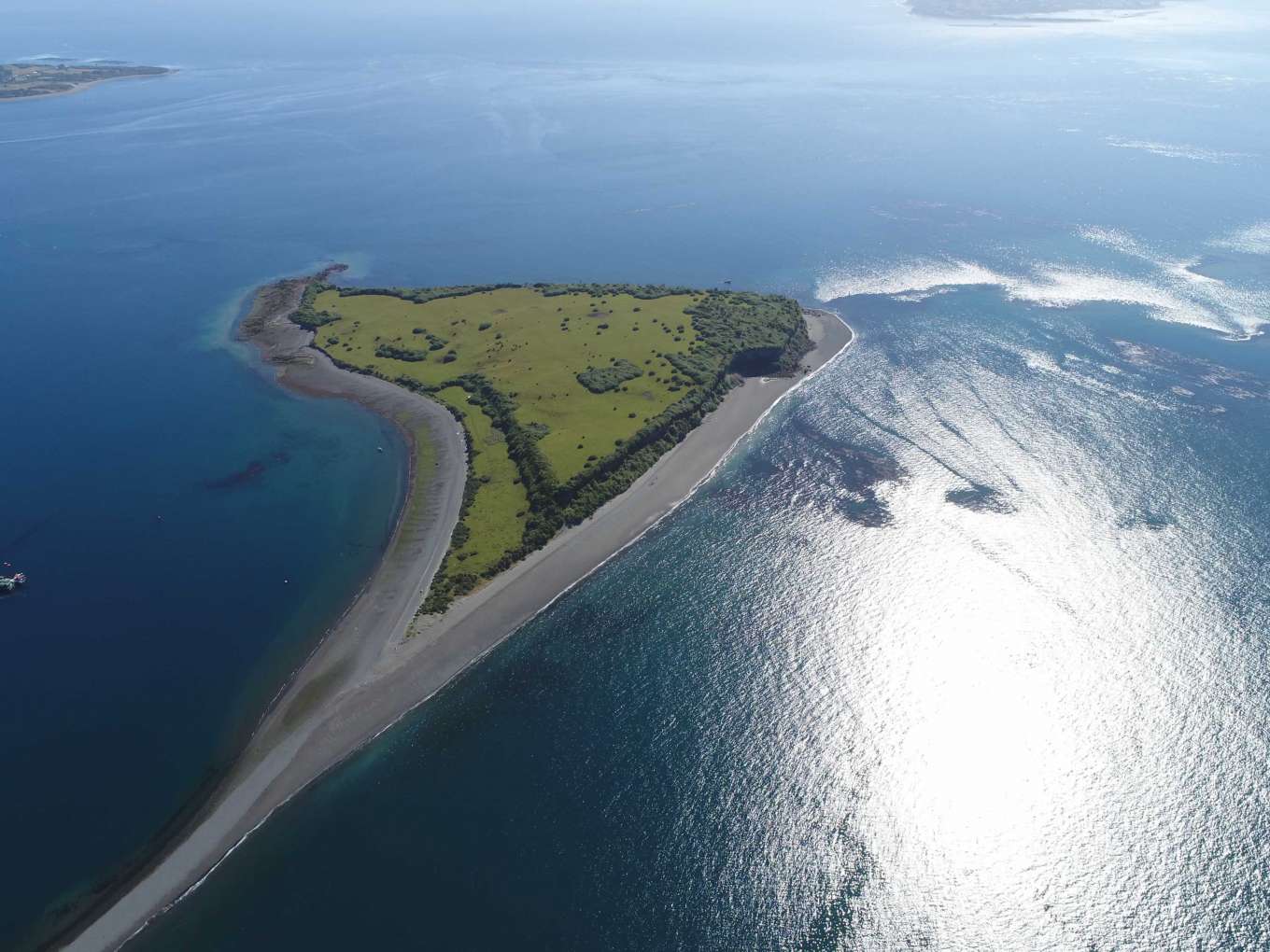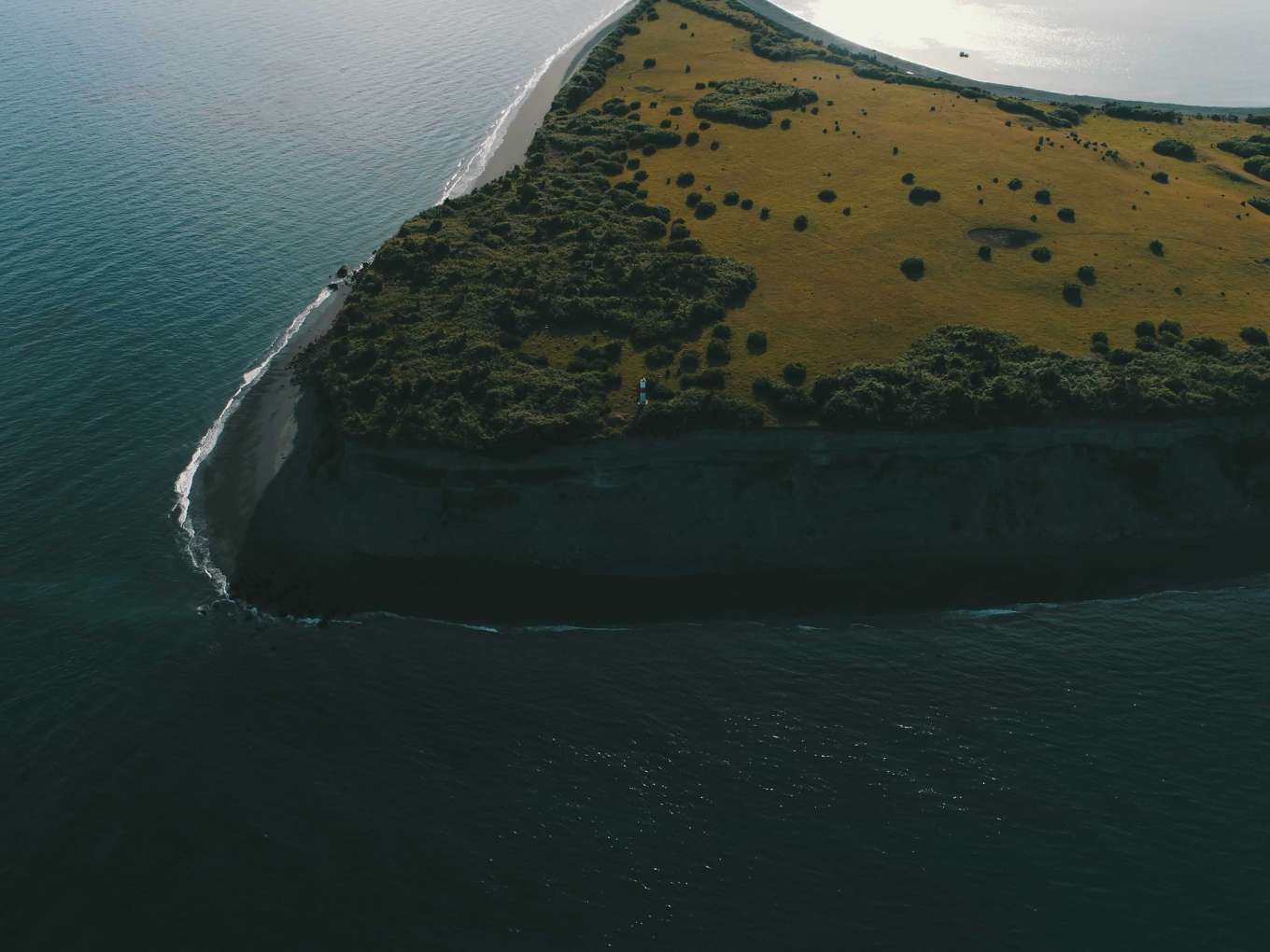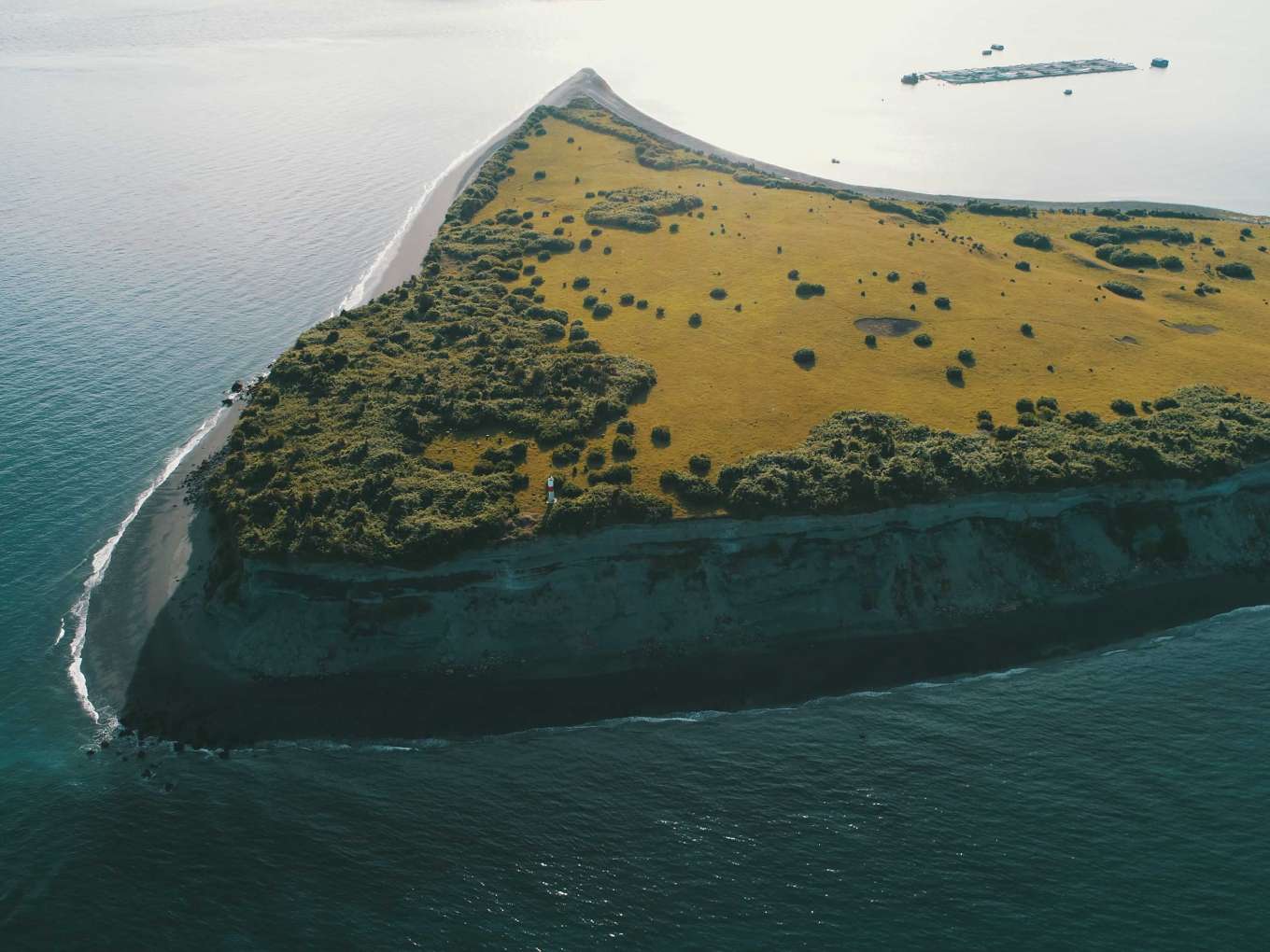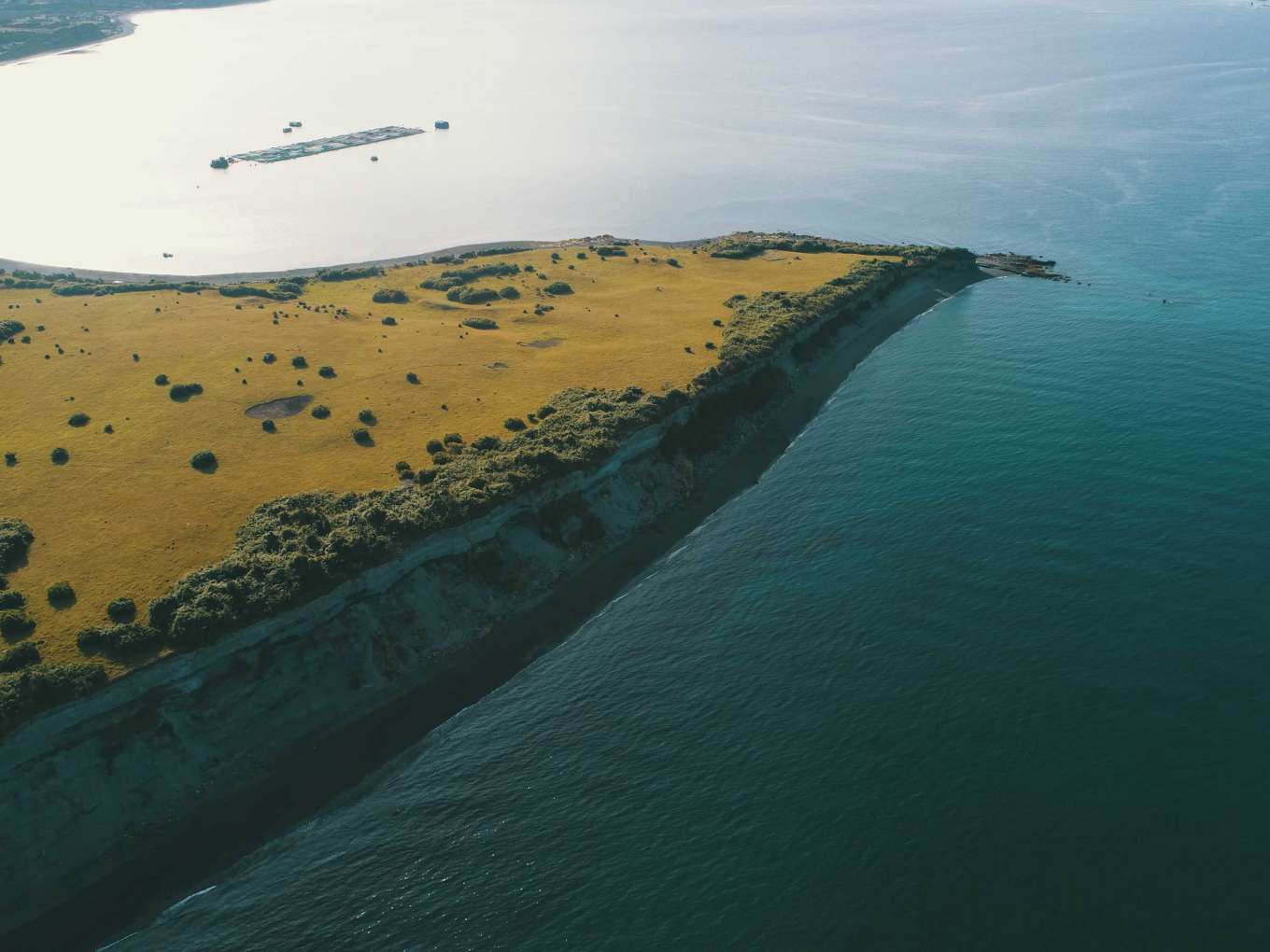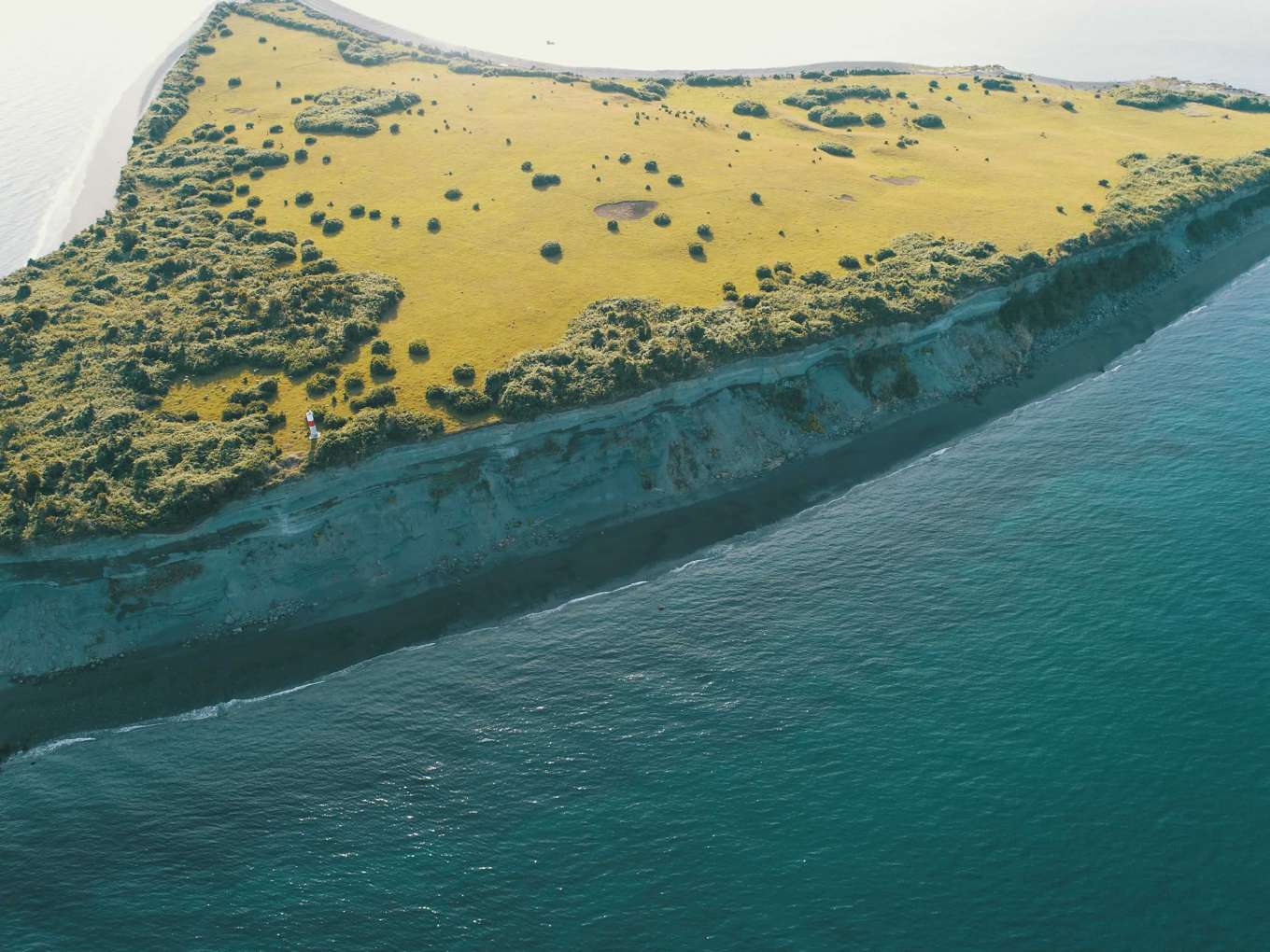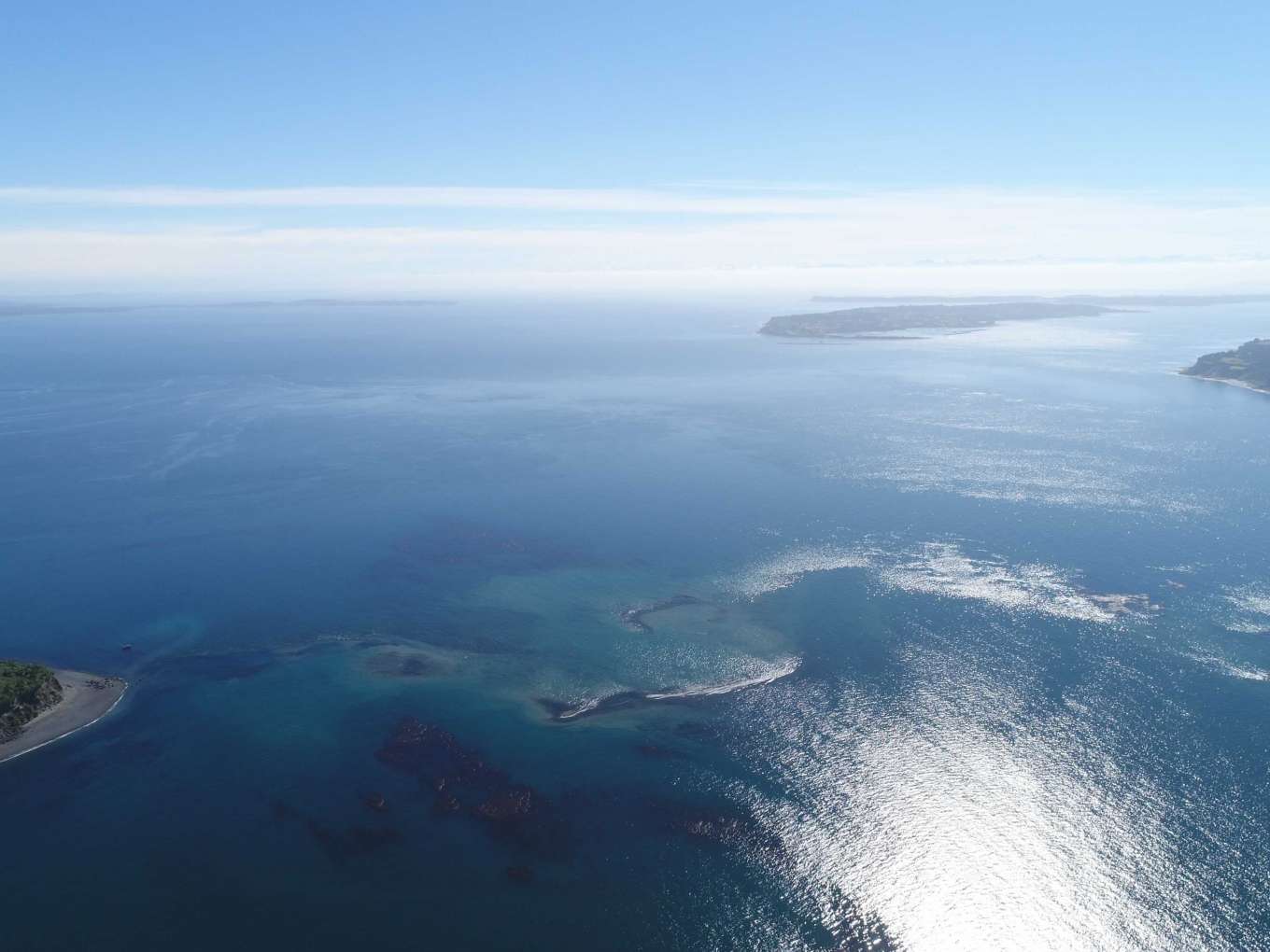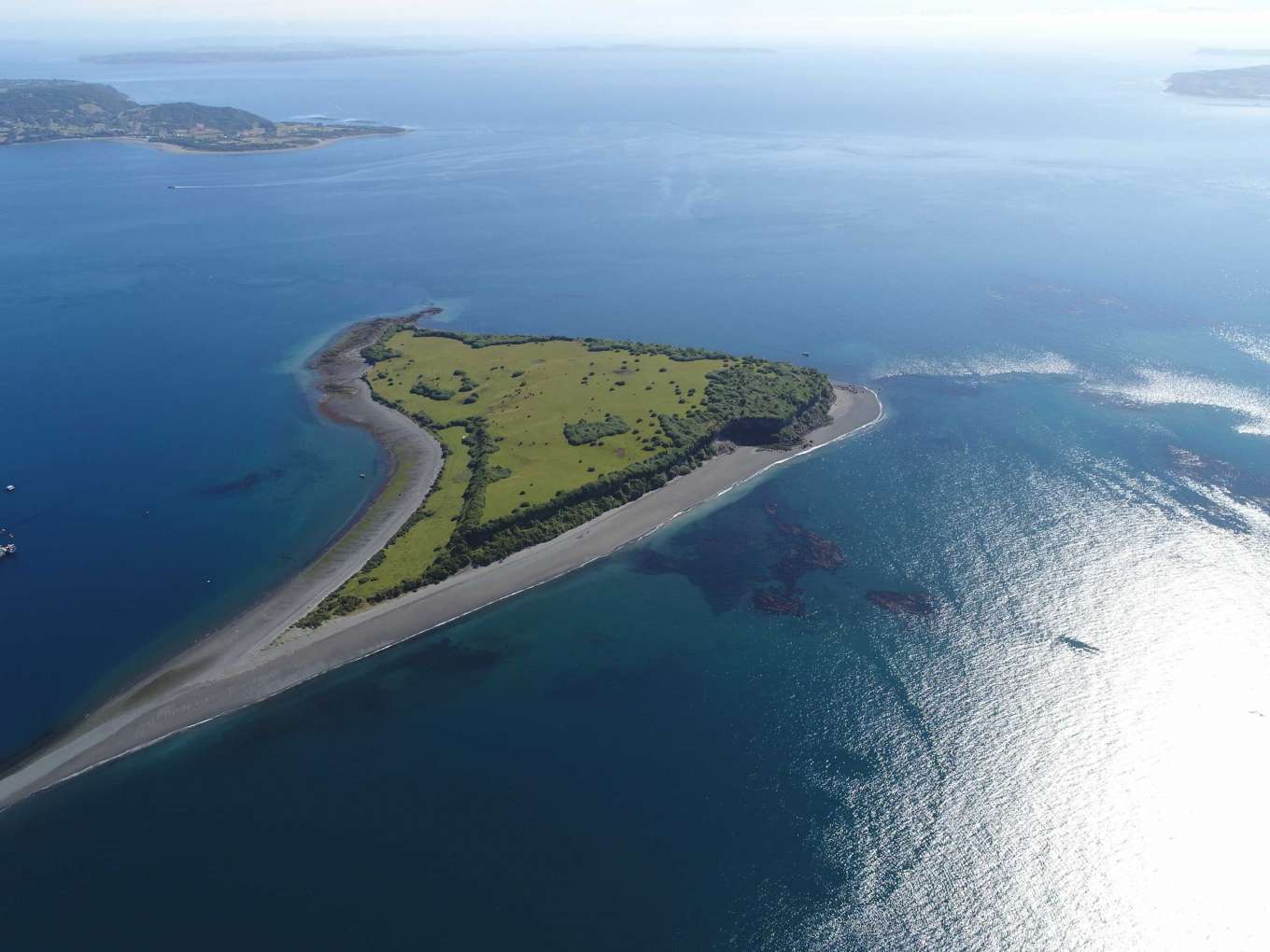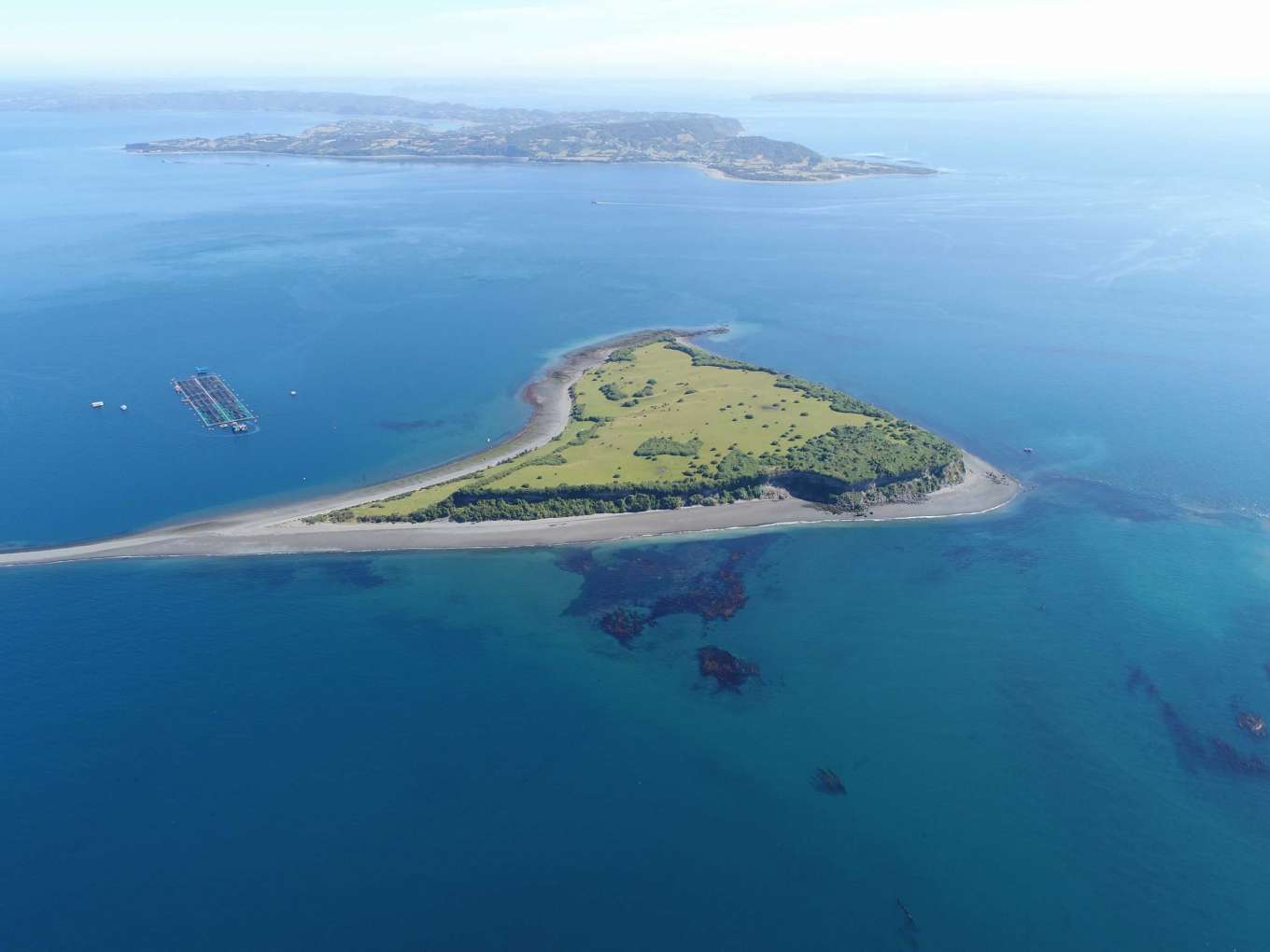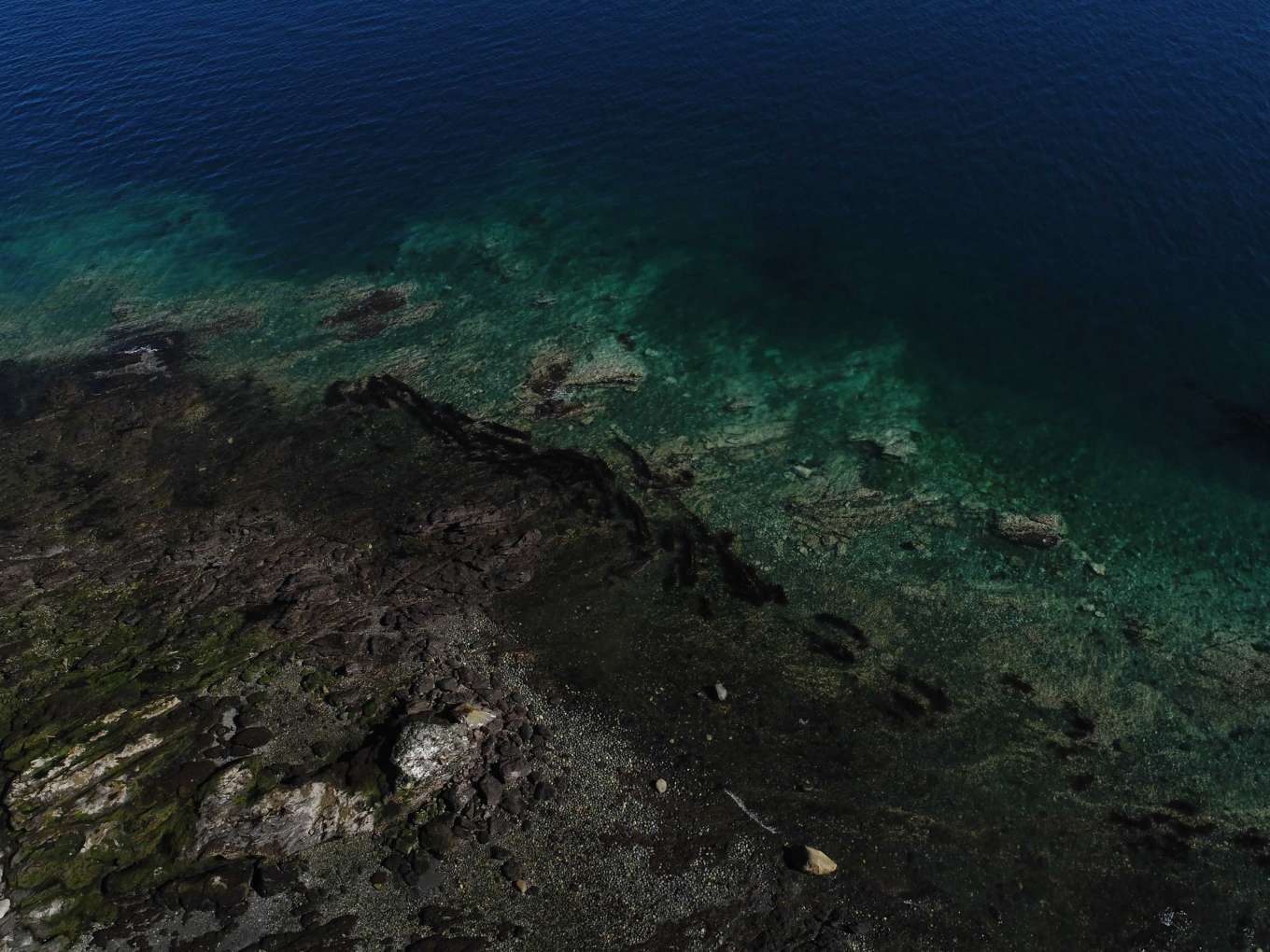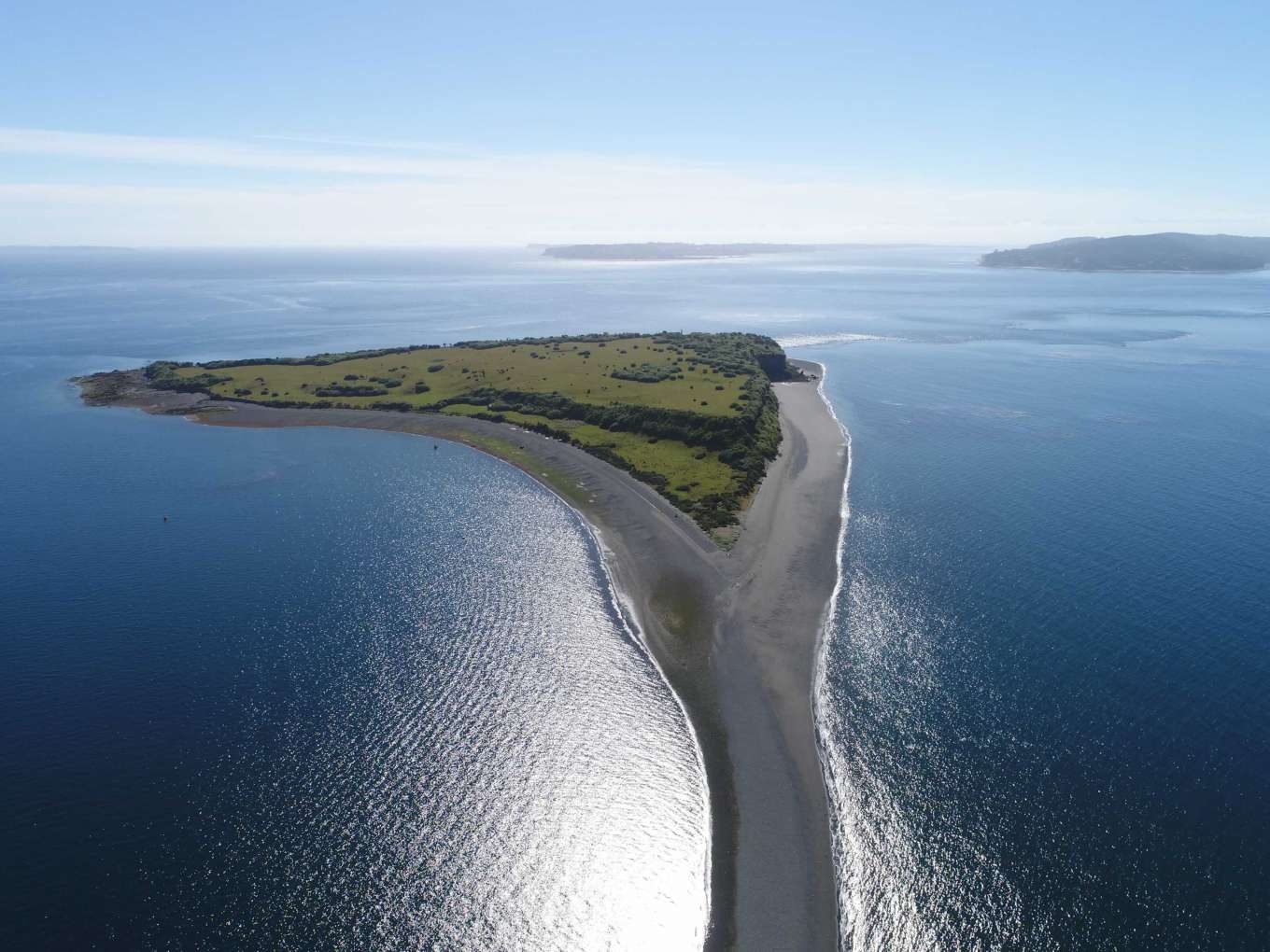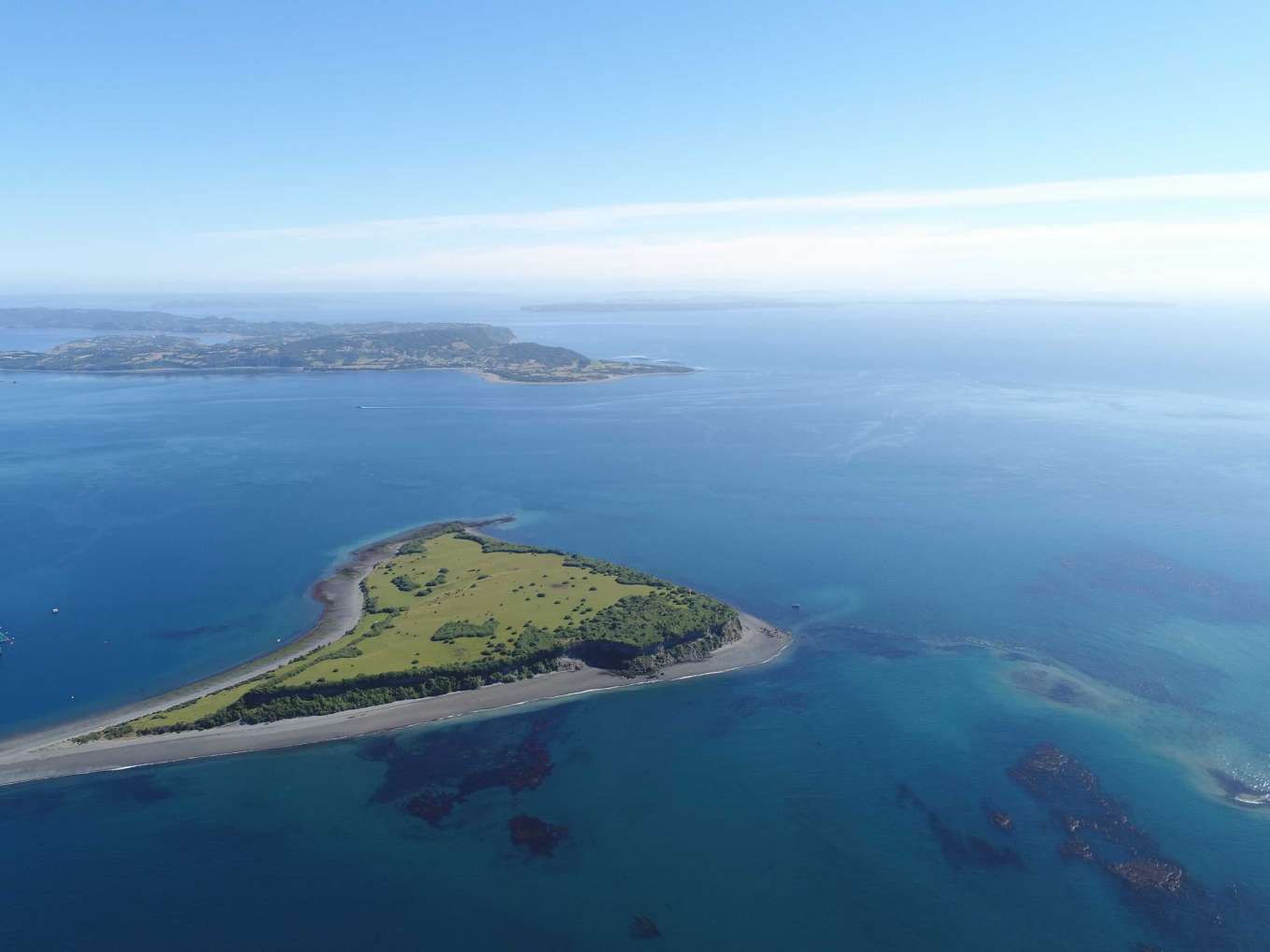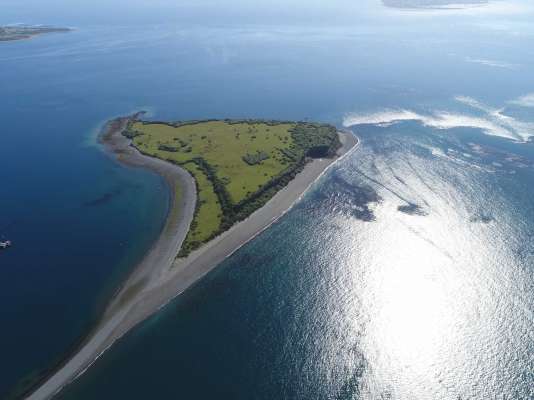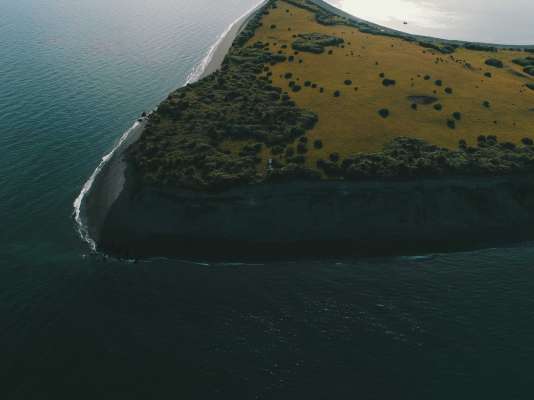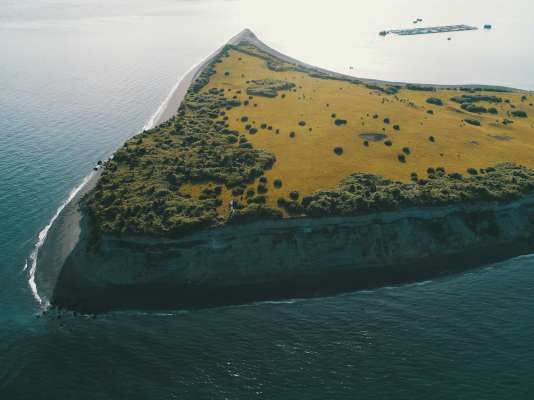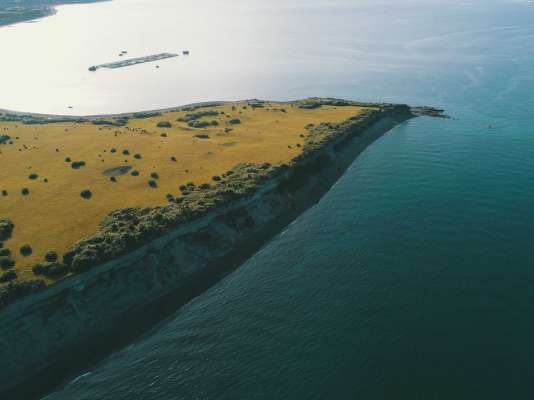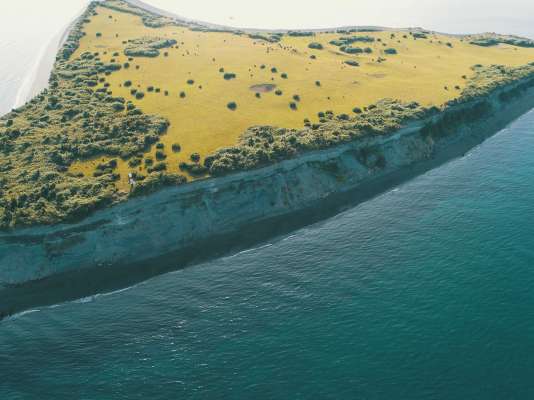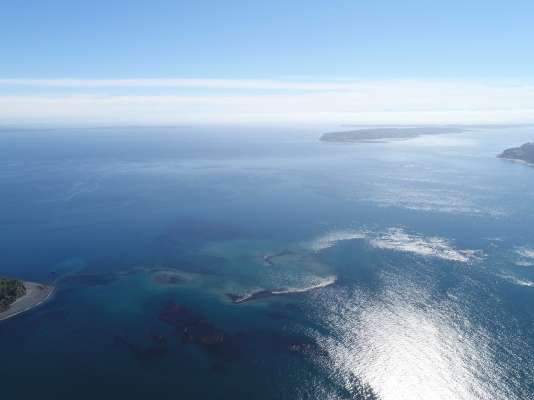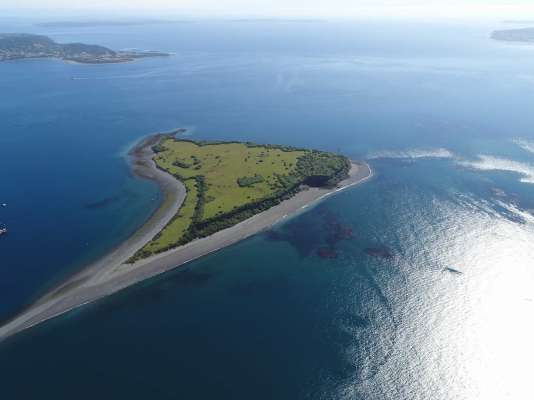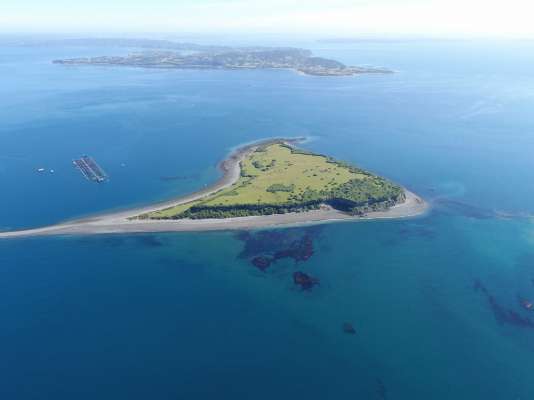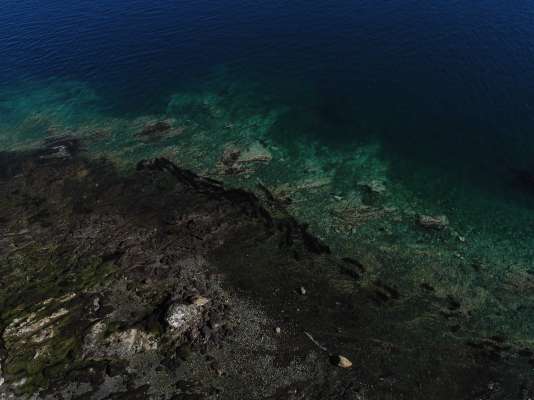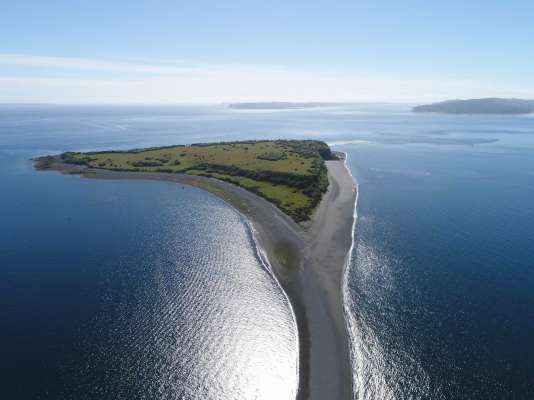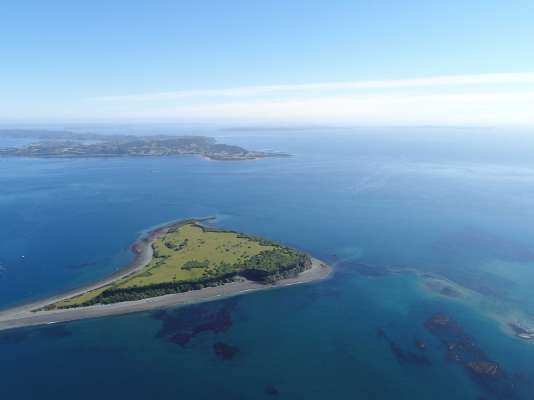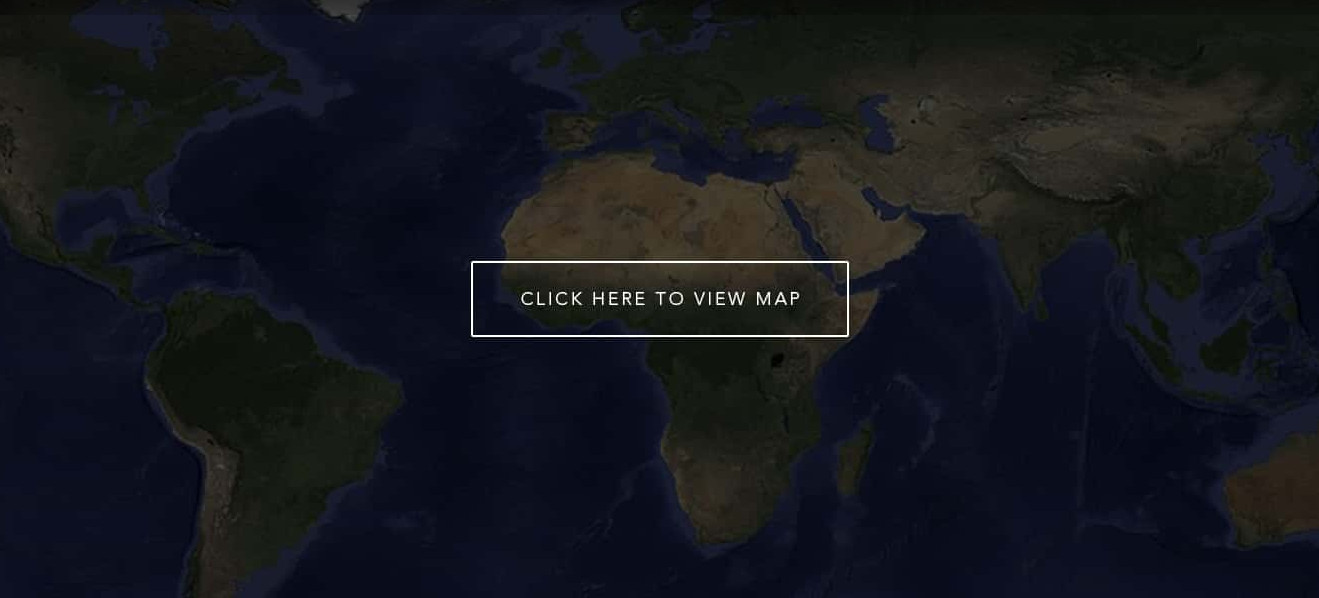Isla Imelev
Imelev Island is a 32-acre triangular shaped island located in the Castro district, region of "Los Lagos". Castro is the most important city in Chiloé, with an airport offering flight connections to Santiago (you can be there in 1.5 hours).
On the northeast and eastern part of the island there is a rising cliff with a maximum height of 80 meters. There's also a lighthouse, property of the maritimal army, that is used as a refere ...
Imelev Island is a 32-acre triangular shaped island located in the Castro district, region of "Los Lagos". Castro is the most important city in Chiloé, with an airport offering flight connections to Santiago (you can be there in 1.5 hours).
On the northeast and eastern part of the island there is a rising cliff with a maximum height of 80 meters. There's also a lighthouse, property of the maritimal army, that is used as a reference point for navigators. On the island's west side you can walk through the shore and tour the entire island.
The flora is composed of native trees and plants (the names in spanish are: "arrayanes, maquis, chilcones, quilas, calafates, nalcas" and others special bushes in the zone). The vast majority of the land is prairie.
The island has its own water resources (underground layers and water springs) that have been used to maintain the grazing activity of animals (sheeps and cows) autonomously. There is currently no development on the island.
Imelev Island is a 32-acre triangular shaped island located in the Castro district, region of "Los Lagos". Castro is the most important city in Chiloé, with an airport offering flight connections to Santiago (you can be there in 1.5 hours).
On the northeast and eastern part of the island there is a rising cliff with a maximum height of 80 meters. There's also a lighthouse, property of the maritimal army, that is used as a reference point for navigators. On the island's west side you can walk through the shore and tour the entire island.
The flora is composed of native trees and plants (the names in spanish are: "arrayanes, maquis, chilcones, quilas, calafates, nalcas" and others special bushes in the zone). The vast majority of the land is prairie.
The island has its own water resources (underground layers and water springs) that have been used to maintain the grazing activity of animals (sheeps and cows) autonomously. There is currently no development on the island.

